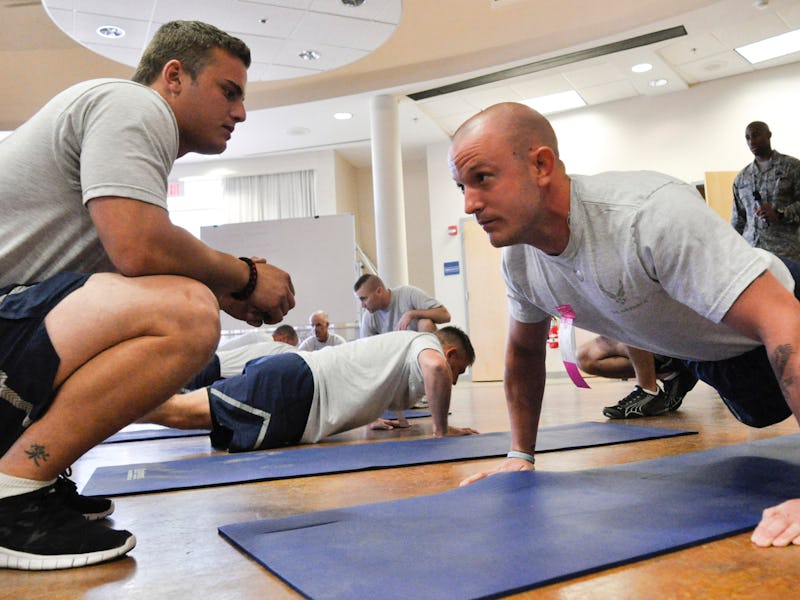A Simple Firefighter Exercise Test Also Reveals Risk of Heart Problems
"These types of objective functional markers are generally good predictors of mortality."

Because heart disease is the leading cause of death in the US, scientists are always looking for things that might predict who is at risk.
In the midst of potential risk factors from prolonged sleep patterns to erectile dysfunction, a study published Friday in JAMA Network Open has a simple, yet compelling test of heart disease risk.
This new heart disease test is an exercise challenge that requires no treadmills, weights, or VR equipment, and it may be able to predict how well someone’s heart may fare 10 years down the line.
Here’s the test: If you can do at least 40 push-ups per minute while maintaining a regular rhythm, without stopping, then these scientists suggest your risk for heart disease is about 96 percent lower than those who can only do 10 in that time period.
The study followed 1,104 middle-aged firefighters in Indiana between 2000 and 2010 who all performed the test. Each firefighter was told to start doing push-ups in time with a beat, like a heart beat or a metronome that ticked away at the rate of 80 beats per minute. They were told to stop when they either completed the challenge successfully and stayed on rhythm for all 80 beats, or missed three beats, or “stopped owing to exhaustion or other symptoms,” as the authors write in the paper.
In short, there were no breaks and no stopping in the test. Part of the challenge was sticking with the pace.
Working with his team, senior author Stefanos Kales, Ph.D., a professor at Harvard University’s T.H. Chan School of Public Health’s environmental health department, collected data on these firefighter’s physical exams over the next 10 years. They found that firefighters who were able to perform at least 40 push-ups at that cadence had a 96-percent lower chance of developing heart disease over 10 years compared to those who could only complete 10 or less.
“Push-up capacity is positively correlated with aerobic capacity and physical fitness,” Kales tells Inverse. “These types of objective functional markers are generally good predictors of mortality.”
More than 40 push-ups at the speed of of 80 BPM isn’t exactly breakneck speed. Overall, 155 of the 1,104 firefighters were able to break 40 push-ups in a minute, and only 75 couldn’t manage 10. The highest amount of firefighters, 389 to be exact, fell somewhere between 21 and 30 push-ups for a minute — slightly short of that ideal threshold. Kales says that he can easily do it himself, adding that it “feels great,” but that it does take some work. “These are healthy habits I have maintained for many years,” he says.
To be clear, this study isn’t evidence that push-ups themselves, or having a particularly ripped upper body, may confer additional protection against heart disease. Instead, it suggests that push-up capacity might be a good, simple way to estimate physical fitness, or exercise capacity which has been shown to predict future risk of cardiovascular disease.
In the paper, the authors note that push-up capacity seemed to actually be a better predictor of future heart disease risk than VO2 max, which they also estimated from the sub-maximal treadmill test at the outset of the study. However, they’re cautious to say that push-up capacity is a great predictor on it’s own, because push-up capacity can radically change with age or BMI, other factors which impact heart disease.
Instead, it’s a simple way to get a sense of general physical fitness, which it probably why push-ups are still a part of police and firefighter exercise regimens, as the paper notes. They don’t require any special equipment — just an eagerness to break that 40 threshold and a steady timekeeper.
Now watch this: Scientists have figured out the bare minimum exercise needed for a brain boost.